You’re cruising down the highway, a favorite song streaming through the speakers, when your car abruptly begins to pull to one side. The dreaded thwap-thwap-thwap sound confirms it: you’ve got a flat tire. Upon inspection, the culprit reveals itself – a nail lodged in the sidewall of your tire. Let us be the guiding light in this predicament.
As an automotive expert and ASE certified technician, I’ve assisted countless drivers with my experience in tire repair and maintenance. In my line of work, punctures on the tire’s treads are dime a dozen. It’s the sidewall punctures that truly test our mettle. The question we frequently field is – can a sidewall puncture be patched?
If you’ve been told that repairing a sidewall puncture is impossible, allow me to reveal a surprising fact: that’s not always the case. A bold statement, you say? Well, join me in investigating this conundrum. We’ll delve into considerations such as how close to sidewall a tire can be patched, when a tire can be repaired, and when a replacement ranks as the safer option.
This journey will equip you with an understanding of the intricacies of tire repair, specifically examining the circumstances under which sidewall punctures can, or cannot, be repaired. So, buckle up as we navigate the illustration of tire repair essentials.
What Constitutes Safe Tire Repair?
Assessing Tire Damage
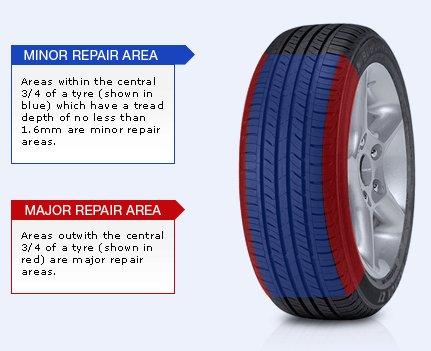
Within the broader scope of understanding what constitutes safe tire repair, assessing tire damage forms a critical step. Both the severity and location of tire damage determine if repair can be undertaken safely and ensure the tire’s continued performance.
Tire damage assessment is my first port of call when approached with a problematic tire. In my lengthy career in the automotive sector, I’ve learned that initial damage assessment is a crucial determinant in the tire’s repairability. The type of damage directly impacts whether the tire can be safely repaired or if it needs to be replaced altogether.
Simple punctures, typically caused by screws or nails, are often repairable if they are lodged within the tire tread. These cases are usually straightforward, with defined repair solutions. Other kinds of repairable tire damage include minor cuts or cracks on the tread. However, not all damage is repairable.
Punctures or cuts on the tire sidewall, for instance, or any damage that exposes the tire’s steel belts or internal components, usually denote irreparable damage. Also, tires displaying signs of aging, like excessive weathering or bulging, often require replacement rather than repair.
A detailed tire damage assessment allows us to categorize the damage, guiding us towards repair, if possible, or nudging us towards replacement. This initial diagnosis is crucial to ensuring safety down the road, and it seamlessly bridges us into the discussion on repairing treads versus sidewalls, a subtopic that delves deeper into determining where and when a tire can be patched.
As we explore further, remember it’s not just about patching up the problem, but ensuring the repair measures meet the standards of safe tire repair.
Repairing Treads vs. Sidewalls
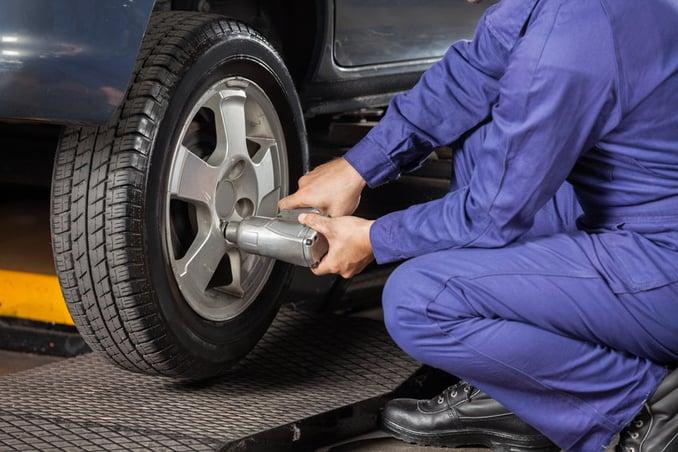
Throughout my career, I’ve observed a common misconception associated with tire sidewall damage and how it differs from tread repair. It’s not as straightforward as one may think, and understanding these differences is vital when it comes to safe tire repair.
Tread repair is usually a simpler process because tire treads are built to withstand common road hazards. A puncture in this area can often be patched or plugged, making your tires safe to drive once again. However, the integrity of the tire depends on the size and location of the damage. Always have a professional assess it to ensure safe and successful tread repair.
Conversely, tire sidewall damage is more complex. The sidewall is structurally different from the tread and isn’t designed to cope with the same level of pressure and wear. If it’s damaged, it compromises not just the tire’s overall integrity, but also your safety. A swell or puncture in your tire sidewall is serious, usually resulting in the need for a full tire replacement.
It’s these fundamental differences that make separating the repair of treads from sidewalls essential. Repairing a sidewall isn’t as simple as repairing a tread, and it often isn’t the safest or most effective solution. What’s paramount is recognizing the complexities of each repair and understanding what constitutes safe tire repair.
Looking forward, we’ll further delve into when a tire can be patched and when it’s more suitable to invest in a new tire. Each situation is unique, and we must approach every repair, be it tread or sidewall, with safety as our topmost priority.
When Can a Tire be Patched?
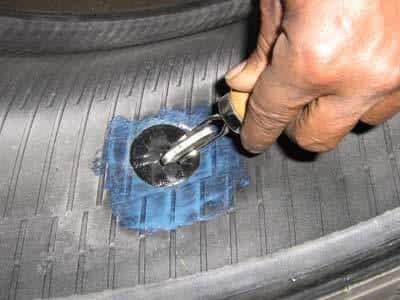
Early in my career as a mechanic, I had a customer, let’s call him Bob, with a tire puncture. Relieved it wasn’t a serious issue, Bob asked if I could simply patch it up. With my limited experience at the time, I did. Two days later, Bob was back, frustrated this time, as the tire had blown out on the highway. That incident made me realize how vital it was to understand the guidelines that govern tire patching. And over the years, as my experience and knowledge grew, it became apparent that patching a tire is not a one-size-fits-all solution.
Let’s unravel when it’s safe to patch a tire, and when it’s not. I can tell you from personal experience and expertise that there are multiple factors involved. Tire patching limitations are largely based on the size and location of the puncture. Also, the overall condition of the tire matters. It’s important to know these tire puncture guidelines. Ill judgement here can lead to disastrous consequences, as I learned from Bob’s experience.
Typically, any tire puncture less than 1/4 inch in diameter can be safely patched. However, if the puncture is larger than that, patching is not an advisable choice. More so, the punctures in treads can be repaired, but sidewalls present complex challenges. Punctures in the sidewall flex more under pressure, increasing chances of the patch failing. Situations like this require tire replacement rather than patch repair.
In my years in the auto repair industry, I’ve seen tires with unusual punctures—a nail embedded at an odd angle, a gash from sharp debris—and, sometimes, patching these is feasible. But it’s critical to remember that patching comes with its restrictions, and it may not be the ideal solution in every case. So, when is it safe to patch a tire? The answer largely depends on the tire puncture size, location, and overall tire condition.
Don’t take patching guidelines lightly. I surely haven’t since my encounter with Bob’s situation. The safety of drivers often rests in our hands, so patching should be done considering all relevant factors. The broad understanding I’m sharing here is based on years of experience, acquired wisdom, and countless repaired tires. Navigating these complexities can be tricky, but with careful judgment, you’ll know when patching a tire is the safe route to take, and when it’s time for a replacement. Be prepared to make that call because every tire, every puncture presents a unique scenario, as it did in Bob’s case, who thankfully emerged unscathed.
To sum up, when it comes to tire punctures, it is not just about patching or replacing. It is about making well-informed decisions that prioritize safety. In the following sections, we’ll explore where to seek professional repair advice and why sidewall punctures are generally non-patchable. Stay tuned.
Where to Seek Professional Repair Advice
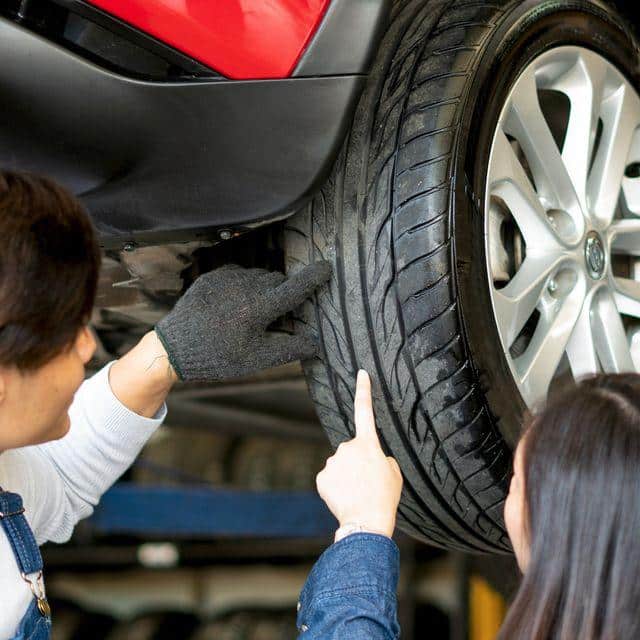
When I first started in the industry, I quickly learned that credible sources of information are essential in understanding tire repair. From assessing tire damage to accurately determining when a tire can be patched, gaining expert advice is invaluable. Hence, I’ll share with you my go-to specialists for tire repair advice.
Finding trustworthy repair advice can be like finding a needle in a haystack. Allow me to show you my trusted sources for professional tire repair advice. My first point of call is often the tire manufacturer. They possess in-depth knowledge of their products and can provide specific guidelines for repairs. However, it’s important to note that general advice might not apply to every situation, as factors such as the extent of the damage can significantly vary.
Another reliable source of tire repair advice stems from certified and experienced auto mechanics. Renowned for their practical experience, these professionals adhere to tire repair shop guidelines, balancing safety and efficiency when suggesting repair methods. Furthermore, they understand the distinctions and nuances in different tire brands, models, and their corresponding repair guidelines, which can be significantly beneficial.
Beyond tire manufacturers and auto mechanics, I have also found industry-specific forums and automotive blogs to be quite enlightening. Even though they should not replace expert advice, these platforms often hosts discussions that deepen understanding and provide diverse, real-world perspectives on tire repair.
Ultimately, when seeking out advice, always consider the source’s expertise and experience. Recognize that each tire damage case is unique, and while general knowledge is valuable, personalized consultation is requisite for making the safest and most effective repair decision. After all, understanding whether a sidewall puncture can be patched demands an informed decision, supported by skilled advice.
As we dive deeper into this topic, in the next sections, we will explore why sidewall punctures are generally non-patchable and how to patch a tire correctly. Bolstered by professional advice and insight, we’ll learn to navigate the complex world of tire repair.
Why Sidewall Punctures are Generally Non-Patchable
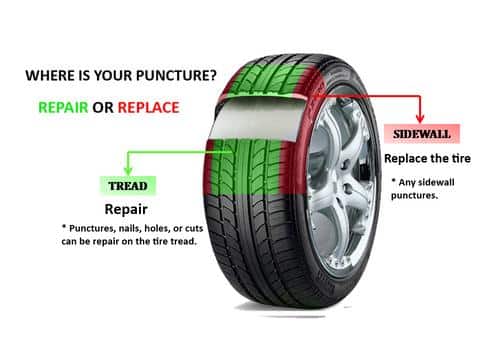
I’ve noticed a common misconception among folks coming into the auto shop—they assume that any puncture, in any part of a tire, can be patched just as easily as the next one. However, the reality is far from this. While the patchable tire area, traditionally located in the middle of the tread, can be treated with certain tire repair procedures, the matter becomes more complex when we’re dealing with a sidewall puncture. My years on the auto shop floor have taught me that patching a sidewall puncture isn’t typically the safest or most effective solution. But why is this the case?
Patching a sidewall puncture may seem like a logical solution, but did you know it’s generally considered unsafe? The reason for this lies in the specific construction and function of the sidewall area. Unlike the tread area, the sidewall of a tire is not reinforced. So, while a patch may initially seem to have resolved the issue, the unique forces that act on the sidewall, particularly stress from cornering, can cause the patch to fail spectacularly and without much warning. The resulting blowout can be disastrous, jeopardizing not just your tire, but also your safety.
All radial tires, the most common type of tires, are especially susceptible to these risks. In radial tire repair, the process involves not just patching, but plugging the puncture from the inside out. This requires specialized materials and training, which can effectively seal the puncture in the tread area. However, the sidewall presents a much bigger challenge. Due to its inherent structural characteristics and the stress it encounters, even a well-executed patch simply can’t ensure a long-term, reliable solution.
Given these factors, I’ve consistently found that patching a sidewall puncture is neither a safe nor permanent solution. The increased risk to your safety far outweighs the immediate gratification of a seemingly quick fix. Yet, it’s essential to remember that diagnosing and treating tire damage should be the job of a professional. While it’s helpful to understand the principles behind certain repair procedures, when it comes to practical application, please leave it to the experts. Ensuring you get the right advice for tire repairs can make a world of difference to your driving safety.
So, as we continue to delve into the intricacies of tire repair, let’s bear in mind that not all punctures are created equal—in terms of their location, their impact, or their repair process. While we often wish for simple, one-size-fits-all solutions, the truth is that proper tire repair requires a nuanced understanding of different tire components and the expertise to decide the best course of action. Always prioritize your safety over a quick fix, and never underestimate the value of professional advice when it comes to tire repairs.
How to Patch a Tire Correctly
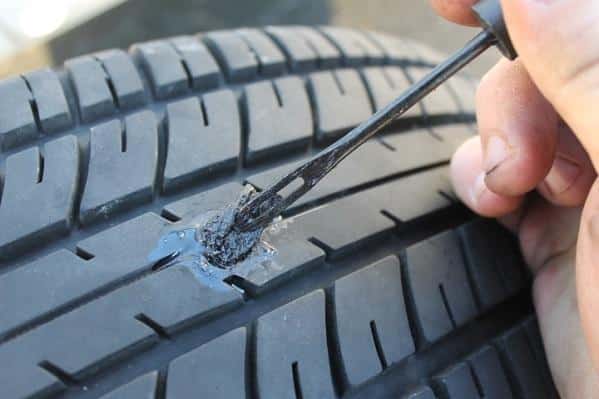
Having covered earlier chapters on safe tire repair and assessing damage, let’s delve into the nitty-gritty – patching a tire correctly. I’ve spent years working in a shop, learning the tire patching rules and mastering the use of a simple tire plug, garnering a wealth of experience. This has not only made me well-versed in the theoretical aspects, but it’s bolstered my skills in practical application, helping me understand the importance of each tiny detail that goes into fixing a punctured tire.
Patching a tire isn’t just about covering a hole—it’s an art and a science. Journey with me as I guide you through the correct way to patch a tire. With every rule or technique I expound upon, remember that it comes with a backstory – a time when I saw its effects firsthand and learned from it.
The first and most fundamental rule in the art of tire patching is ensuring the tire is deflated entirely. You don’t want to battle forces of pressurized air while dealing with a puncture. So, for safety measures, always make sure the tire is completely empty before you begin.
Next, it’s all about making sure the puncture area is clean. Using a specially designed rasp tool, I work the puncture area, removing all foreign material and creating a fresh base from where the tire can begin its healing process. Then, I’ll use a vulcanizing solution, an essential step many tend to overlook, which greatly enhances the adhesion of the patch.
Handling the patch itself is where you require precision. Using needle-nose pliers I carefully pull it through the puncture, ensuring to leave half of it sticking out. Then, using a tire roller, I apply even pressure to it, securing the patch into place.
You see, it’s not just about stuffing in a tire plug, patching a tire demands following certain steps with precision, respecting the process, and understanding why each step is essential. It’s a fascinating combination of hands-on labor and mental acuity.
Once the patch is secure, it’s time to remedy the tire’s exterior. This, too, takes considerable care. Using an angle grinder, I lightly buff the exterior around the patched area before applying a final layer of vulcanizing fluid.
In the grand scheme of understanding tire repair, learning how to patch a tire correctly is an essential cog in the gearbox. It serves as one of the most fundamental skills to possess, not just for DIY enthusiasts, but even for professional technicians. In the next chapter, besides the usual informative elements, I will share some personal anecdotes that illuminate how this technique has been a lifesaver on the road.
FAQs
What is a Sidewall Puncture in a tire?
Can a Sidewall Puncture be patched?
What risks are associated with patching a sidewall puncture?
What should be done when a sidewall puncture is detected?
Conclusion
In conclusion, having traversed the intricate world of tire repair, there’s a key takeaway that every car owner should remember – a sidewall puncture is generally not patchable. This understanding is crucial to ensuring safe tire repair and promoting the longevity of your tires.
While tire punctures in the tread can often be patched, sidewall damage compromises the structural integrity of the tire, making it unsafe for continued use. This highlights the importance of always assessing tire damage correctly, whether you’re a seasoned mechanic or a vehicle-rookie aiming to maximize road safety.
Despite the technicalities and complexities that come with tire repair, don’t be quick to discard your punctured tire. Sometimes, a professional review might absolutely rescue you from an unnecessary purchase of a new tire. Always seek expert advice.
I hope this information helps you navigate the often complex landscape of tire repair, enabling you to make informed decisions about when and how to address a sidewall puncture. Remember, safety should always be your greatest priority when dealing with these kinds of situations on the road.